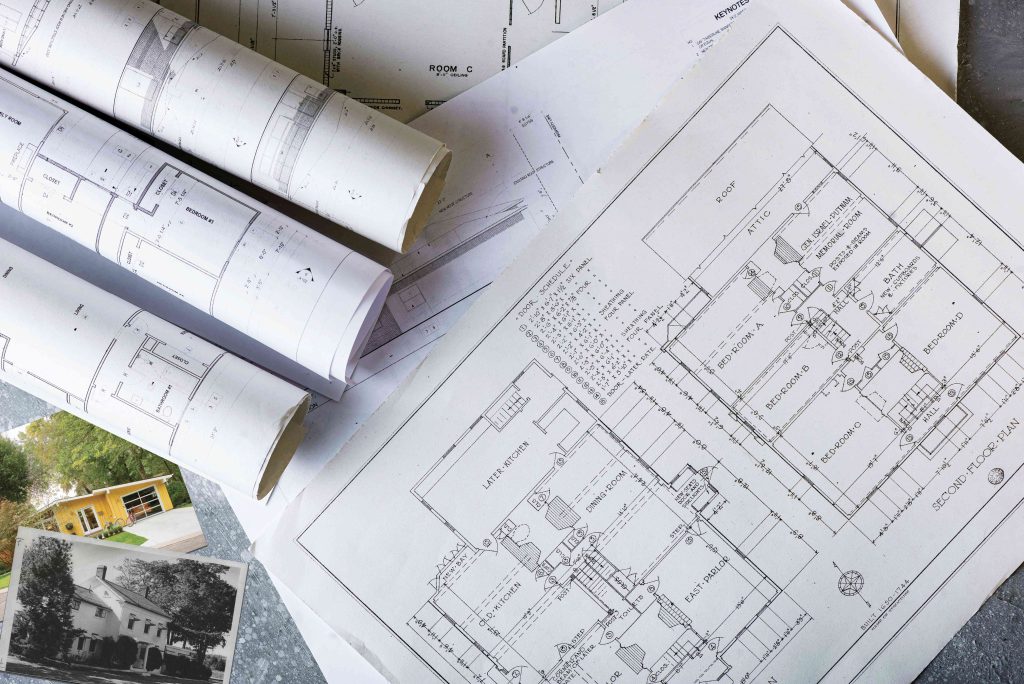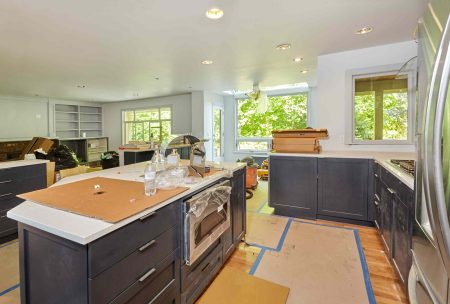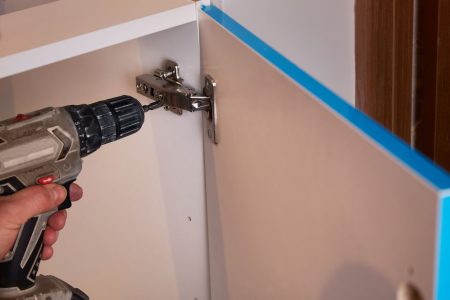Modern homes are virtually always built from detailed blueprints that serve as a roadmap for the building trade professionals laying foundations, erecting the structure, and finishing the house. For owners of older homes seeking to preserve or restore them in a historically accurate way, blueprints are an indispensable resource for remodeling and restoration work. No construction firm today can confidently build a home without them. Here’s how to get your house blueprints.
Click Play to Learn How to Find Blueprints to Your Old House
How to Get Blueprints
A home’s original blueprints feature dimensions, specs, and elevation drawings, showing where every window and door was originally placed. The house you’re living in today may have begun in a much different style.
Here are several potential ways of finding original blueprints for your home:
- Contact real estate sales agents
- Visit neighbors with similar homes
- Consult local inspectors, assessors, and other building officials
- Examine fire insurance maps for your neighborhood
- Review local archives at the historical society, including historic plan books
- Look for archived editions or local newspapers with real estate advertisements featuring simple floor plans.
- Do an online search
- Hire an expert to help you
Ask a Local Realtor
If a realtor handled the sale of your house, then ask them if they can get the blueprints. Or, if you didn’t go through a realtor, check to see if there’s a long-standing realtor in the neighborhood. The sales agents may be able to help you locate facts about its construction.
If your house was built in the past 50 years, real estate agents often know the local developers who may be familiar with your home or its style. Ask your realtor if they know the town’s history.
If your home was the product of a stock plan, many realtors tend to know which stock plans were used in their region.
What Is a Stock Plan?
Stock plans were also called catalog plans, stock building plans, stock house plans, mail-order plans, and pattern book houses. Stock plans were the blueprints for cookie-cutter homes, which reduced architectural design costs. Anyone could buy the stock plans and build on a plot of land. Catalog houses from Sears, Roebuck & Co., and Montgomery Ward made a century ago are still popular today.
Chat With the Neighbors
Your neighbors might know about the history of your house or have a similar home. Planned and gated communities usually limit the available house styles, which means they used stock plans for that community. There’s a good chance that the neighbor’s home may have been designed by the same person or developer who built your home.
If your neighbor’s house has never been modified, you might even ask to walk your neighbor’s halls to understand the original floor plan of your own home. It can’t hurt to ask if they have their home’s blueprints lying around.
Stock plans are associated with production home builders, but anyone can buy stock plans and build on a plot of land. Planned and gated communities usually limit the available house styles, which are stock plans for that community.
Check With Municipal Records
Public officials should also know something about the building history of your town or city, so check with the building inspector or assessor’s office at the town hall. Builders must file for a permit before beginning new construction or remodeling an older home. This process ensures some safety standards for occupants and the fire company that protects your home.
These permits, often with floor plans and elevation drawings, are usually filed in the building inspector’s office at your local city or town hall. These documents may not date very far back, but they can help you learn about modifications made to your house in the past 20 years or so.
Look at Fire Insurance Maps
Usually, at City Hall, you can ask to see the fire insurance maps for your area. In the United States, many fire insurance maps date back to the 1870s. These maps will indicate the original construction material (e.g., brick, wood, stone) used for your home, and a good bird’s-eye view map can provide a three-dimensional drawing of houses in your neighborhood.
Sometimes there is enough detail to show the shape of the buildings and the placement of doors, windows, and porches. Compare your findings with Google Maps.
Access Historical Archives
Many communities maintain archives with old photographs, building plans, and maps. These records may be heaped in disorganized piles in the town hall attic or cataloged and shelved at your local library, museum, or historical society.
Ask if you can access the archive to find clues about your old blueprints or your home’s construction. Some towns may have an official city or town historian who can advise you in your search.
Search Through Historic Catalogs, Newspapers, and Advertisements
Old publications like historic catalogs can assist you in locating vintage blueprints for your house. If your home was built at the turn of the century, there’s a good chance the builder drew inspiration from a pattern book.
In the early 20th century, many American houses—some surprisingly complex—had humble beginnings as a Sears, Roebuck ready-to-assemble mail-order kit. Others followed stock plans published by firms such as Palliser, Palliser, & Company.
Check out the Sears and Craftsman homes advertised in old magazines and mail-order catalogs. Other catalogs offer a collection of plans for midcentury dwellings, such as the many Cape Cod house plans from the 1950s and the heyday of the minimal traditional style in 1940s America.
Reading old advertisements can also give you a historical context for building processes of the past. Simple floor plans for your old house or similar ones may have been published in real estate advertisements. Go to your public library for back issues of local newspapers right before and around the time of the construction of your home. Farm journals and women’s magazines also featured advertisements for building plans.
Try Online Resources
You can find a lot of records online, or you can start the process of making old records request from your computer. Check out some of the forums that still exist online, like Old House Web. Websites like NETR Online, which Nationwide Environmental Title Research runs, continue to add public records to their databases.
Hire an Expert to Help You
If you don’t have time for all this investigative research or don’t relish the thought of doing research, you can hire an expert to assist you with your search.
Your blueprints may not exist anymore, but a good expert will get them if they do. Start by asking a local architect or civil engineer. And, if they can’t find the blueprints, they should be able to get you something to work with.
Every modification made to your home left behind a trail of evidence. Also, remember that a building professional, such as an architect or structural engineer, can use field measurements and other clues to recreate the original plans.
Read the full article here









